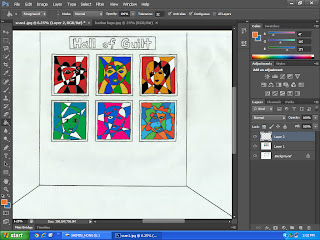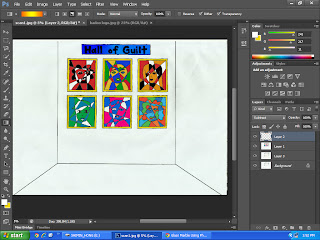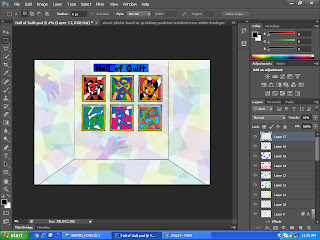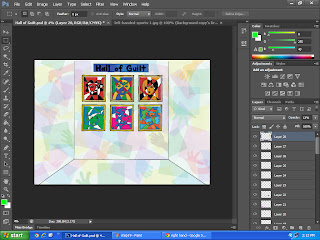Theme: Social Media Issues
Artist: Hong Shi Min
Student ID: B1101991
In this modern era, social media
apparently has become an essential element in our daily life. Social media
allow us to create, share and exchange information or ideas in a very creative
and efficient way. Yet, social media doesn’t merely bring benefits. Nowadays,
social media issues have come out in an increasing rate. Social media issues
include security, privacy, scam, cyber-bullying, cyber-harassment and so on.
Cyber-bullying is when a child, preteen or teen is harassed, threatened,
tormented, embarrassed, humiliated or otherwise targeted by another child,
preteen or teen using the Internet, interactive and digital technologies or
mobile phones. Cyber bullying has different forms. It may involve sending
threatening, mean and vulgar messages or images, posting private and sensitive information
about others, spreading rumors and deliberately excluding someone from an
online social group. Cyber bullying can be as simple as sending an email, yet,
the effects brought to the victims can be very serious. For instance, damaged
reputation, depression and even suicide attempt.
My idea is to not only show that cyber-bullying
is peccant and morbid, but also to create awareness of cyber-bullying. I have
come out with few popular social media to involve in my painting which includes
social networks, video and photo sharing websites and website search engine.
They are YouTube, Google, Weibo, Stumble, Flickr and Badoo. Instead of using
the logo or words, I only used colors of the icons to represent these social
media. The context of my artwork is showing portraits being exhibited in a
hall, named “Hall of Guilt”, and the artists of these portraits are the
descriptions of cyber-bully. As you can see in my artwork, the artist of each
portrait to show that cyber-bully is an offender, anonymizer, stalker, liar and
threatener. The concept of my painting is using Cubism to show the
interaction between cyber-bully and social media. Other than that,
geometry has been used in my artwork to bring the effects of hands randomly and
subtly showing on the wall.
I created a new layer and painted the portraits.
the "Hall of Guilt" signboard was colored and I used Gradient and Subtract effect. The frames were colored using brush and different tones as well.
I used Bevel & Emboss and Inner Glow effects to make the portraits having glass effect.
I created few layers to put different colors of geometry on the background and lower the opacity to make the spatial effect.
I cropped the part I wanted from Google's image and dropped a shadow. I created a layer for the shadow so that I could copy the shadow and paste it to my artwork.
Here you can see the copied shadow was pasted on the background and lowered the opacity.
I have repeated the making and copying shadow steps therefore you can see there are a lot of hands on the wall.
Lastly, I put text for the portraits.
Here's my artwork.
"Hall of Guilt"
"Hall of Guilt"
Artist Statement:
My artwork explores the relationship
between social media and internet users and takes a critical view of
cyber-bullying. Cubism makes subtle combination of the portraits and the colors
of social media icons. The use of transparency of color and the geometry applied on the
wall give viewers a different spatial impression. While seeing this artwork, I
hope the viewers can imagine yourselves standing in this Hall of Guilt, looking
at the portraits, and have introspection if you have ever
done cyber-bullying. The hands from the wall are trying to make connection with
you, be aware of cyber-bullying!

.jpg)








.jpg)




















